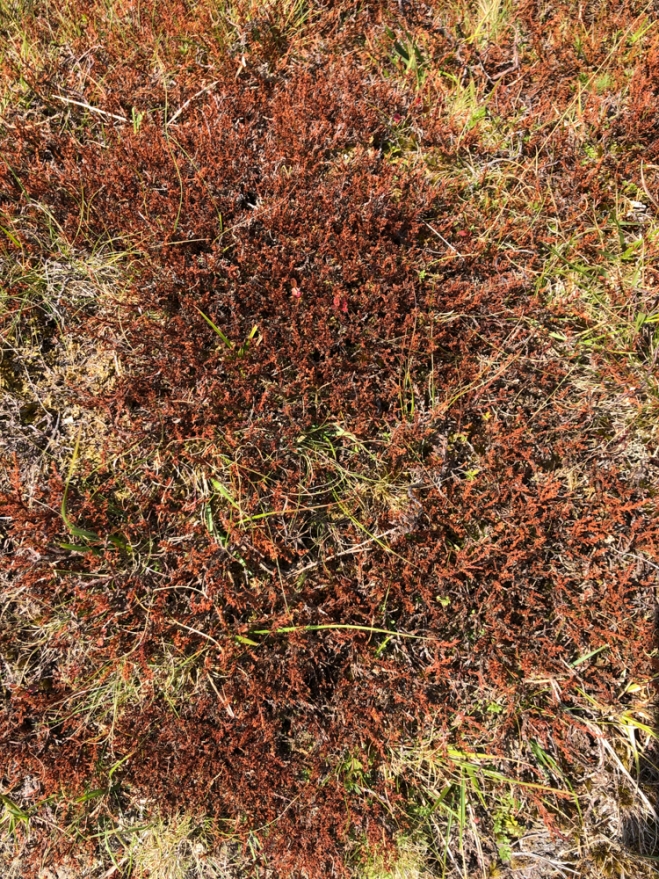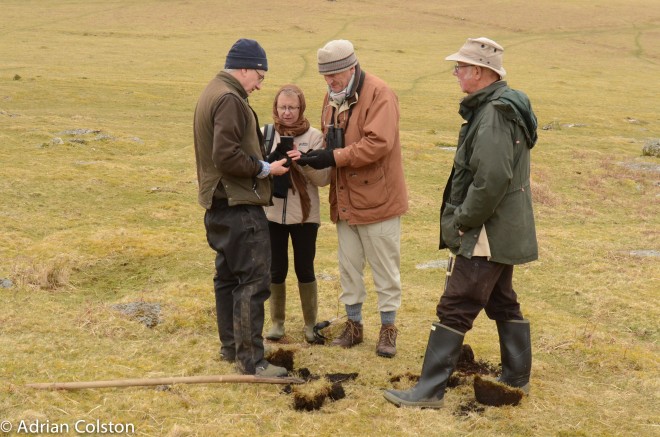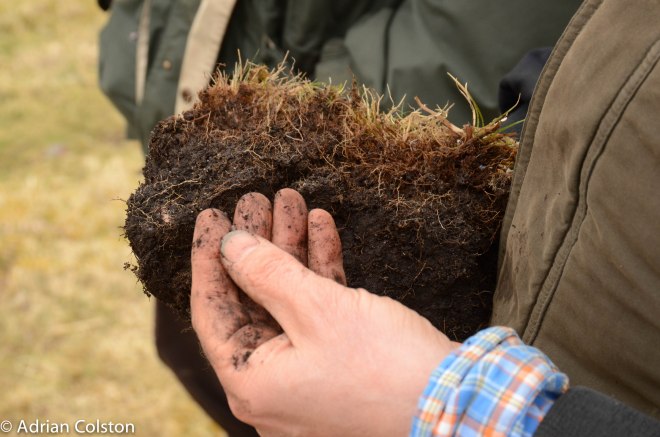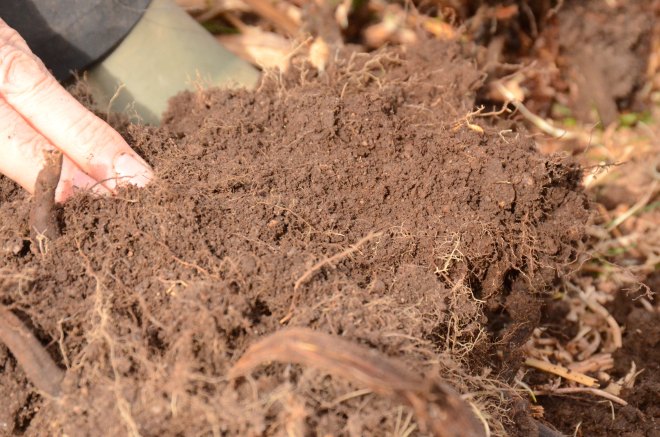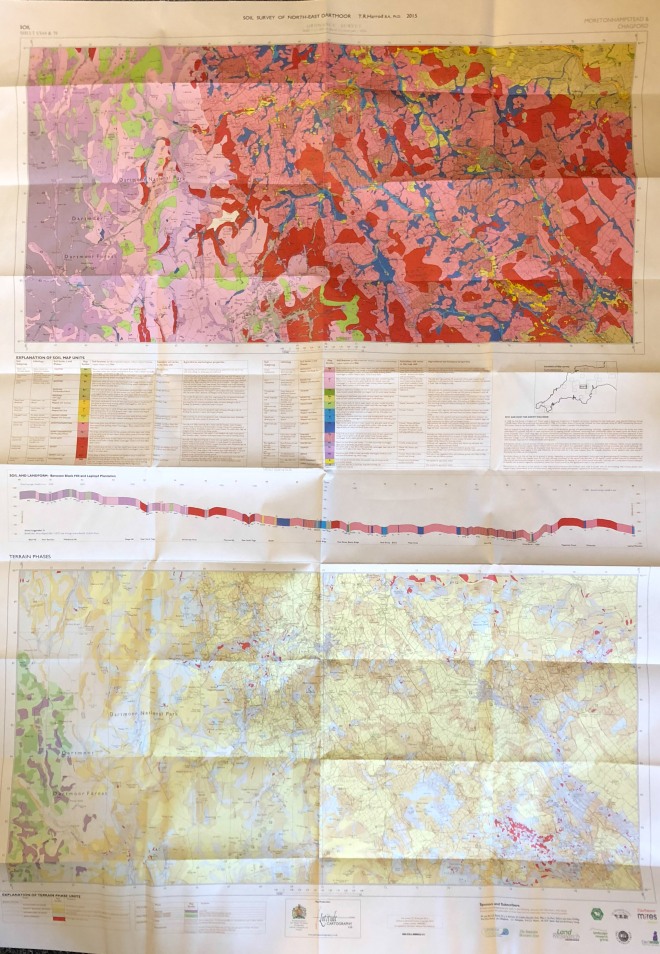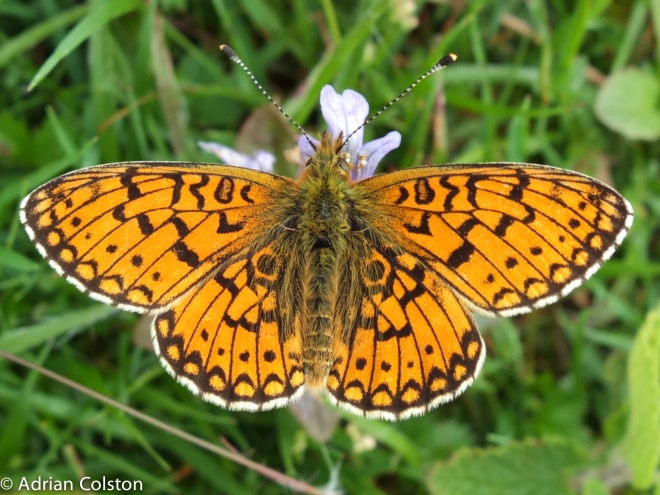Charles Vancouver’s General View of the Agriculture of the County of Devon [1] written in 1808 is a widely cited source with regards to grazing and potential agricultural improvements on the Dartmoor Commons.
Vancouver’s book is an amazing treatise on the state of agriculture across Devon in the early 19th century and while much of its focus was on agricultural improvement it contains several sections about the grazing potential of the Dartmoor Commons.

Vancouver described Dartmoor as follows
The whole surface of Dartmoor, including the rocks, consists of two characters, the one a wet peaty moor, or vegetable mould, but affording good sheep and bullock pasture, during the summer season. The other an inveterate swamp, absolutely inaccessible to the lightest and most active quadruped that may traverse the sounder parts of the forest. P281
He then goes on to recommend that the ‘inveterate swamp’ is drained and improved but defends the ‘wet peaty moor’ as follows:
The depasturable parts of the forest, consist of a black moory soil, from eighteen inches to two feet in thickness, generally forming peat below, always highly charged with moisture, and ultimately resting upon a reddish-coloured argillaceous loam, called fox-mould, and which is also retentive of water in a very high degree. The spontaneous vegetation of this part of the forest, among many other herbs and grasses, consisted of purple melic grass, mat grass, downy oat grass, bristle-leaved bent, eye-bright, bulbous rooted rush, common termentel, smooth heath-bed straw, common bone binder, cross-leaved heath, common heath or ling (dwarf), milk-wort, dwarf dock and agrostis vulgaris in very large quantities. The disturbing of this herbage, however inferior it may appear in the eye of the refined agriculturalist, is on no account whatever to be recommended to permitted.
Vancouver goes on to describe the importance of the ‘wet peaty moors’ for grazing by sheep and cattle.
“The importance of the first description of these wastes (referring to his earlier writing on the boggy character of Dartmoor), can in no way be so fully shewn as by stating the stock feeding upon them. The Commons belonging to the parish of Widdecombe [and Buckland in the Moor] will furnish a sufficient example, when in the month of October last, there were estimated by gentlemen residing in the neighbourhood, to be no less than 14,000 sheep, besides the usual proportion of horned cattle.” p228

Mercer (2009) comments on these high sheep numbers suggesting that the Commons of Widecombe and Buckland today amount to 1032 ha. and therefore in 1808 were subject to a grazing pressure of over 2 sheep per ha. My own research concludes that the two Commons amount to 1940ha., nearly twice the area Mercer states. With regard to the cattle we are left unclear on their stocking density but Mercer (p292) states that Vancouver described them as standing ‘shoulder to shoulder’. These two Commons account for around 5% of Dartmoor’s Commons, so if we take an estimate that there were 10,000 cattle on the Commons of Dartmoor in the early 19th century we could speculate that there were 500 (5%) on these two Commons.
By doing this we are then able to construct some grazing pressures, measured in Livestock Unit (LSU) where 0.15 sheep equates to 1 bovine, which we can then compare to those seen in the modern era.
14,000 sheep May to Oct = 2100 LSU
500 cattle May – Oct = 500 LSU
Total 2600 LSU
over 1940 ha of Common = 1.34 LSU / ha / year.
Many studies have been published which seek to recommend appropriate grazing levels on upland grasslands and heaths. The majority of these have been carried out either in Scotland, the Peak District and the Pennines.
In north-east Scotland a grazing pressure of 0.2 cattle and 2.7 sheep / ha (this equates to 0.605 LSU / ha [2]) caused damage to heather communities. Additionally, with cattle at 1.2 / ha (1.2 LSU / ha) there was a 32% decline in 4 years and a decline from 80% to 5% heather cover in 10 years. With 5 sheep / ha (0.75 LSU / ha) there was a 9% decline in heather cover over 4 years (Welch 1984).
A grazing pressure of 2 sheep / ha (0.3 LSU / ha) on heather moorland and 0.37 sheep / ha (0.055 LSU / ha) on blanket bog was considered to be compatible with nature conservation objectives. Whilst 0.5 sheep / ha (0.075 LSU / ha) on heather moorland and 0.1 sheep / ha (0.015 LSU / ha) on blanket bog was required for heather to regenerate (Evans & Felton 1987).
On the face of it the grazing pressure reported by Vancouver is in excess of that which modern research found that habitat damage would occur. However Vancouver reported both cross-leaved heather and ling as being notable in these pastures.
The situation is further complicated as Vancouver also reports the following.
“From the number of sheep annually summered upon Dartmoor and Exmoor forests, the ewes and lambs of which are always brought down into the country on the approach of winter, it will be readily supposed, that a large proportion of sheep stock is always found to occupy the surrounding districts during the winter season. The greater part of these flocks, however being wethers (castrated rams), and chiefly preserved for their wool are left upon the forests during winter.” P345
The sheep in question here are White-faced Dartmoors, these sheep were being raised to produce wool and mutton. The wethers were the principle producer of wool fleeces and may have been kept for up to 6 years. The key factor in the above text is that they were being overwintered on the moor. It is widely assumed that all-year round grazing on Dartmoor did not occur until the late 19th century and the early 20th century when Scotch Black-faced sheep and the Galloway cattle arrived. It would appear that the practices of transhumance (summer grazing and winter resting) along with levancy and couchancy – the rule that determined the number of grazing stock that could be summered on the Common by reference to the capacity of the land to which the rights were associated to feed stock over the winter months, i.e. all stock on the Common in the summer had to be accommodated and fed on the farm in the winter months were already breaking down.
If we assume that that the wethers accounted for 8000 of the 14,000 sheep (‘the greater part’) then we need to add an additional 1200 LSUs in to the calculation.
14,000 sheep May to Oct = 2100 LSU
8000 wethers Nov to Apr = 1200 LSU
500 cattle May – Oct = 500 LSU
Total 3800 LSU
over 1940 ha of Common = 1.96 LSU / ha / year.
Grazing pressures at these levels, according to the recent research would cause serious problems of overgrazing and habitat degradation. However this would appear not to be the case in 1808 as Vancouver goes on to report:
“The number of sheep thus summered and kept the year round upon the forest of Dartmoor, the depasturable parts of which, in a dry summer, is one of the best sheep-walks in the kingdom, is not easy to ascertain; but if any inference can be drawn from the returns made from Widdicombe and Buckland in the Moor, their numbers must necessarily be very considerable indeed. A dry summer (as just observed), is always the most favourable for these sheep walk. These afforded in the months of August and September last, flocks were more numerous, and in much higher condition, than has ever been observed by the surveyor in any other part of England, when such have not been aided by access to the enclosures or artificial food. Yet the grass of the sheep-walks upon the forest of Dartmoor, in the beginning of November was scarcely half consumed.” P346-347
Additionally Mercer (p303) quotes Vancouver who reported seeing ‘knee high grass’ on the Widecombe Commons in May. Ample grazing at the beginning of the growing season and scarcely half consumed in November.

Vancouver’s 1808 account of sheep on Dartmoor contrasts markedly with that of Robert Frazer who in 1794 published a ‘General View of the county of Devon with observations on the means of its improvement’[3]. On page 53 he states
The south and east quarter are the driest and best for sheep, and from the most accurate information I could obtain, there are not five thousand sheep kept on both these quarters. Certainly not so many on the north and west. So that if we say 10,000 sheep for the whole of Dartmore, we shall be beyond the mark. I think there are not 8,000 in the whole forest in any summer.
However, Fogwill (1954) in his essay on Pastoralism on Dartmoor stated that in Annals of Agriculture there is a footnote stating that ‘this a great error’.
It is difficult to unravel this mystery and we may never be able to do so: perhaps the gentlemen of the parish miscalculated the number of sheep; perhaps the 14,000 sheep were not solely on the Commons or perhaps the breeds of animals involved i.e. the White-faced Dartmoor sheep and the Ruby Red Devon cattle impacted less severely on the vegetation than Scotch Blackfaces and Galloways.
Or maybe, just maybe, in the time before the Industrial Revolution began, before the era of atmospheric pollution and climate change, the hill-farmers of Dartmoor had perfected a system of pastoralism which allowed them to graze the Commons with great numbers of animals without damaging the vegetation.
A mystery indeed.
[1] The entire manuscript can be downloaded here free of charge https://books.google.co.uk/books/about/General_View_of_the_Agriculture_of_the_C.html?id=BwhLAAAAYAAJ&redir_esc=y
[2] LSU is known as a livestock unit Cattle = 1LSU, Ponies = 1 LSU & Sheep = 0.15 LSU
[3] Download free of charge here https://books.google.co.uk/books/about/General_View_of_the_County_of_Devon.html?id=-H5bAAAAQAAJ
Evans S. & Felton M. (1987) Hill livestock compensatory allowances and upland management. In Bell and Bunce (1987) pp66-72.
Fogwill E. (1954) Pastoralism on Dartmoor. Transactions of the Devonshire Association 86: 89-114.
Mercer I. (2009) Dartmoor: a statement of its time. Collins. HarperCollins. London.
Welch D. (1984) Studies in the grazing of heather moorland in North-East Scotland. II. Response of heather. Journal of Ecology 21: 197-207.


